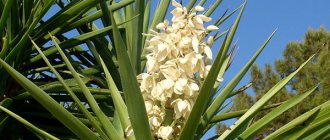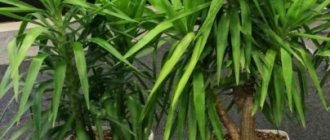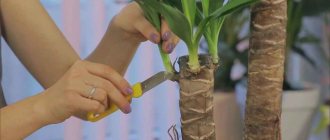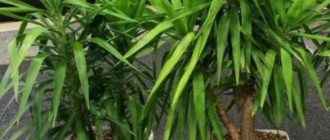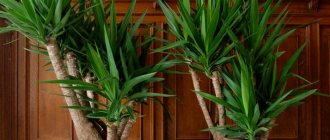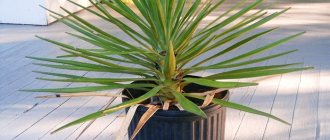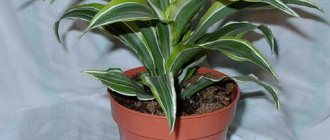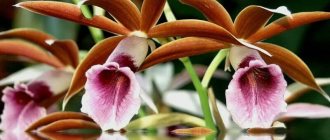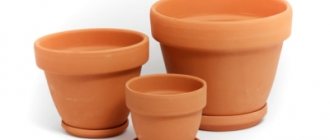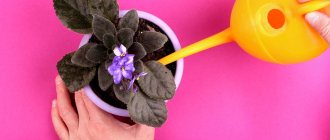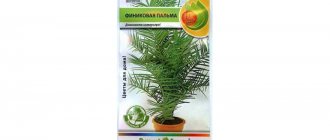Yucca's need for replanting
Yucca is a miniature tree-like plant, which is considered one of the most striking cultivated species of open soil in zones with subtropical and tropical climates. Despite the fact that in its natural environment it is a powerful woody plant, yucca grows quickly in an indoor pot, so the pot is replaced quite often.
Did you know? Yucca leaves contain specific substances (aglycones, saponins) that are widely used in medicine. With their help, various hormonal drugs used for human treatment are synthesized.
According to the general rules of agricultural cultivation, replanting this species is carried out as necessary, when the plant occupies the entire free volume of the pot. Most often, young specimens under 5 years old have their containers renewed annually.
Large yucca over 5 years old is transplanted much less frequently. This is due to the fact that adult specimens have an established metabolism that promotes moderate growth and an increase in plant volume. In this case, the pot is replaced no more than once every 2–3 years.
Particular attention should be paid to replanting after purchase. Often, plants sold in flower shops are kept in low-quality, temporary containers that are practically not suitable for long-term cultivation, so after purchase they require immediate replacement as soon as possible.
In addition, the store-bought substrate is often far from the ideal required for the successful growth of yucca, in which case replacing the pot is not only necessary, but also a vital measure.
general description
Yucca filamentous can be grown both as an indoor flower and as a garden plant . It is a shrub with almost no stem.
Its hard, bluish-green, lance-shaped leaves have pointed tips. It differs from its relatives in its richness of color: its leaves can be decorated with white or yellow stripes.
This exotic beauty has several dozen species, some of which have settled in our homes, and some of the yuccas have acclimatized in the garden. In a number of publications on our website, we talked about the unpretentious elephant yucca, the original bluish-gray, heat-loving aloel-leaved shrub with amazingly beautiful flowers - yucca filamentosa.
When can you replant yucca?
Yucca can be replanted throughout the active growing season - from early spring to late autumn. However, yucca adapts to new conditions most quickly if the procedure is carried out in early or mid-spring.
At this time, plant organisms experience the most active metabolism, which directly has a beneficial effect on rooting in new soil.
Also find out why yucca leaves turn yellow.
Growers often have differing opinions regarding replanting new plants. Many people advise carrying out the procedure within a few days after purchasing yucca. Otherwise, poor-quality soil or the wrong size of the container can inhibit its growth and immunity, in which case the flower cannot avoid all kinds of infections.
Opponents argue that placing a palm tree in new climatic conditions already causes stress for it, so the procedure should be held off until spring.
It is also worth mentioning that you should definitely replant a palm tree that is susceptible to any infectious diseases or pest damage. In this case, the procedure is carried out urgently, regardless of age and time of year. During an emergency change of container, the soil is also renewed.
Important! It is not recommended to replant yucca more than 3 times in a year, otherwise it can lead to disease and even death of the plant.
Preparing for transplant
Preparations for replanting a palm tree begin a week before the procedure, at which time the soil in which it will develop during the next growing season is pre-prepared.
A special substrate is suitable for growing this species; it is often prepared with one’s own hands from a mixture of turf, leaf soil, river sand and humus (2:2:2:2:1). Sand can be replaced with perlite or vermiculite, which are just as good at giving the substrate the desired lightness and looseness.
Before planting, the soil must be sterilized. This event is carried out in several ways:
- wetting with a 1% solution of potassium permanganate;
- roasting in the oven for 20–25 minutes at a temperature of +125 °C;
- heating in the microwave for 5–10 minutes (at maximum power);
- freezing in the freezer at -20...-25 °C for 2–3 days.
Sterilized soil is placed in a separate container and kept at room temperature for 7 days. This is necessary for the soil to restore its consistency, as well as its microflora.
Palm trees are planted in deep garden containers; containers made of ceramics or clay are best suited for these purposes. They are able to absorb moisture, which will protect the yucca from waterlogging. Plastic containers are also suitable for planting, but in this case you need to be more careful about the watering regime.
The bottom of the pot must contain a drainage hole; stagnation of moisture is detrimental to the plant, which is fraught with putrefactive lesions of the roots. A successful pot must be 2–3 cm in diameter larger than the volume of the rhizome. These indicators are approached strictly, since a large or excessively small container will lead to oppression of the palm tree.
Immediately before planting, sterilize the pot and drainage layer (small pebbles, gravel or expanded clay). This is a mandatory measure; after replacing the pot, the yucca exhibits growth inhibition; sterilization helps protect it from infectious agents, to which it is especially susceptible during this period.
Disinfection is carried out in two ways:
- heating in the oven (at +125 °C, about 25 minutes);
- treatment with 1% solution of potassium permanganate, 70% alcohol solution.
Diseases and pests
Overwatering of yucca threatens the appearance of root or stem rot, bacterial or fungal diseases. The leaves and trunk become covered with areas that are soft to the touch and dark spots.
In this case, the damaged parts of the plant must be removed, and the surviving parts must be treated with a fungicide. Of course, watering must be reduced and spraying must be stopped altogether.
But in fact, it is almost impossible to cure this disease: it is better to root the surviving, healthy part of the trunk or the very top of the plant.
Leaves are drying
If only the lower leaves of a yucca dry out, this is a natural process, and you should not worry about it. However, if the top leaves also dry out, something is going wrong. Most likely, the reason is a lack of moisture - adjust the watering regime .
Also in dry rooms, yucca can be attacked by spider mites : then the leaves also begin to dry out and become covered with yellow spots and cobwebs.
To combat these pests, yucca should be treated with a mild solution of tobacco, Dalmatian chamomile, garlic or onion infusion. The plant should be washed from the table to the edges of the leaves. The procedure must be carried out until the insects are completely defeated.
Shield aphids , which are also dangerous for yucca, must be dealt with in a different way. A solution of laundry soap that needs to be used to wipe the leaves will help here. The larvae are sprayed with a solution of soap and tobacco, to which kerosene or even denatured alcohol is added. It is possible to use ready-made pest control products.
If it turns yellow
Most often, this phenomenon is observed in winter, when the rooms are too hot due to heating devices, and, on the contrary, there is not enough lighting. In this case, try to move the plant away from the radiators and provide it with access to the maximum amount of light.
Yellowness can also be caused by insufficient watering, drafts or sudden temperature changes. Or spraying under the sun: in this case, the yellow spots are sunburn.
How to replant yucca at home: step-by-step instructions
In most cases, replanting indoor plants is carried out using the same method, regardless of the variety and type of flower. However, in the case of yucca, this rule is not followed. This is due to the fact that the species has its own morphological characteristics and requires special care, including transplantation.
Video: transplanting yucca at home
Filling the flowerpot
This is one of the main stages when replacing a pot, since it determines how quickly and how long the plant will develop in the new container.
It is carried out in two cycles:
- A drainage layer of gravel, expanded clay or pebbles should be placed in the pot. The bottom of the vessel is filled evenly with a layer of 3–4 cm with the drainage component.
- After this, you need to densely pour the prepared soil over the drainage in a layer of 4 cm.
Did you know? In the USA, yucca fibers are used to make denim. They give clothes mechanical strength and increase their wear resistance.
Preparing the plant
Before planting a purchased palm tree, it must be freed from old soil. To do this, place the flowerpot in a deep container with water at room temperature for 1–2 hours. The water will completely soak the soil, which will help remove the plant without harming the root system.
After the soil has softened, you need to remove the palm tree along with the root soil, and then carefully wash it off in water. At the end of the procedure, the root system is dipped into a basin of clean water, where the remaining soil is thoroughly rinsed.
If you are replanting an adult plant that has been kept indoors for at least 1 year, you do not have to resort to washing the roots. In this case, replanting is carried out by transshipment, by transferring the yucca to a new flowerpot along with the old soil, or the old substrate is lightly shaken off, always leaving a root ball.
Planting Yucca
On the prepared plant, the first 2-3 leaves are removed, so the yucca does not waste energy on maintaining unnecessary parts of the body.
After this, the root system is carefully placed in a flowerpot and covered with soil, and the following rules must be followed:
- it is not recommended to deepen the stem by more than 2 cm, as in this case the root may rot;
- the soil should not be compacted too much during replanting, as this can damage the delicate root system of the yucca;
- the upper border of the substrate must be at least 2-3 cm below the edges of the pot, this will help to avoid water leaking out of the pot during watering;
- After transplanting, the flowerpot must be watered, otherwise the yucca cannot avoid moisture deficiency.
Important! Before replanting on yucca, it is necessary to remove yellowed foliage, otherwise various foci of putrefaction may develop on them, inhibiting acclimatization in the new container.
Growing
How is garden yucca propagated? Filamentous yucca is grown from seeds or propagated vegetatively.
For the first method, you need to soak the seeds in warm water for a day, and then distribute them evenly throughout the container and sprinkle them with light peat or leaf soil. The container with the seeds should be covered with film, then placed in a warm, shaded place and ventilated periodically. Under favorable conditions, seedlings should appear in a month.
The second method involves rooting the cut top of the “palm tree”. The cut must be dried, the lower leaves must be cut off, and all the remaining leaves must be collected towards the middle of the trunk. The cuttings are planted in moistened sand, covered with polyethylene and placed in a warm place, ventilating the “greenhouse” from time to time. After 3-4 weeks, when the cutting takes root, it can be planted in a permanent place.
Fragments of the trunk are also suitable for germination . They should be laid out on moistened sand, pressing firmly against it, and covered with polyethylene. When new sprouts appear from the buds on the stem, it needs to be divided so that a sprout with roots remains on each fragment. They can be seated in permanent places and proceed to the usual care regimen.
Garden yucca can also be propagated by dividing the bush . Considering that the plant grows very quickly, this method of propagation is very effective and simple. In addition, it will not allow decorative “palm trees” to grow too thick.
Features of aftercare
The transplanted plant must be provided with an optimal microclimate until it takes root. This is one of the main rules for successfully replanting yucca, since otherwise it may wither and die over time, so the pot is kept warm with minimal fluctuations in temperature and moisture.
Location and conditions of detention
As you know, this species came to us from warm southern regions, so conditions of high temperature and moderate moisture will be most favorable for it. To do this, the average daily temperature optimum in the room should be within the range of +20...+25 °C, with a humidity of no more than 60%.
For this purpose, the flowerpot is placed on a southern windowsill, with abundant and long-lasting light. Direct sunlight is not a problem for this palm tree, but before full rooting at noon, it is better to slightly shade it with a translucent curtain.
Video: yucca transplantation and subsequent care for it
Watering
As mentioned above, the first watering of an indoor palm tree in a new pot is carried out immediately to avoid drying out of the roots. Subsequently, the substrate is moistened as necessary, when a characteristic “dry crust” appears on the soil.
Often, watering is carried out no more than 2 times a week, adding moisture in moderate portions. To do this, approximately 1–1.5 liters of water are used per 5 liters of soil. Water the flowerpots with clean, settled water at room temperature. Apply it at the root, avoiding irrigating the foliage.
Fertilizer application
Indoor yucca requires the first feeding 10–14 days after transplantation. Next, feed the plant throughout its active growth (spring and summer) once every 2–3 weeks. Any mixtures for decorative deciduous species can be used as fertilizers. They are added in mixtures with water at a concentration half as low as recommended by the manufacturer on the packaging.
Important! If the palm tree has not been able to take root completely before fertilizing, fertilizing the flowerpot is postponed, otherwise it may cause oppression of the plant.
Typical mistakes during transplantation
Despite the fact that transplanting yucca does not require specific knowledge and skills, many, especially novice gardeners, make quite serious mistakes during this procedure. In most cases, this leads to long-term rooting and acclimatization, but sometimes it can cause the death of the palm tree.
The most common among them are:
- transplantation in winter during dormancy;
- complete removal of the old substrate from the roots (with the exception of transplanting from a store pot);
- failure to maintain the optimal microclimate before rooting;
- waterlogging of the substrate;
- planting the plant too deep;
- neglect of fertilizing after replacing the pot.
Despite many contradictory statements, replanting and further rooting yucca at home is considered a fairly simple process, which is why both an experienced and an amateur gardener can grow this plant without fear. It is important to remember that the palm tree has a delicate root system, so replacing the pot should be done as carefully as possible.
